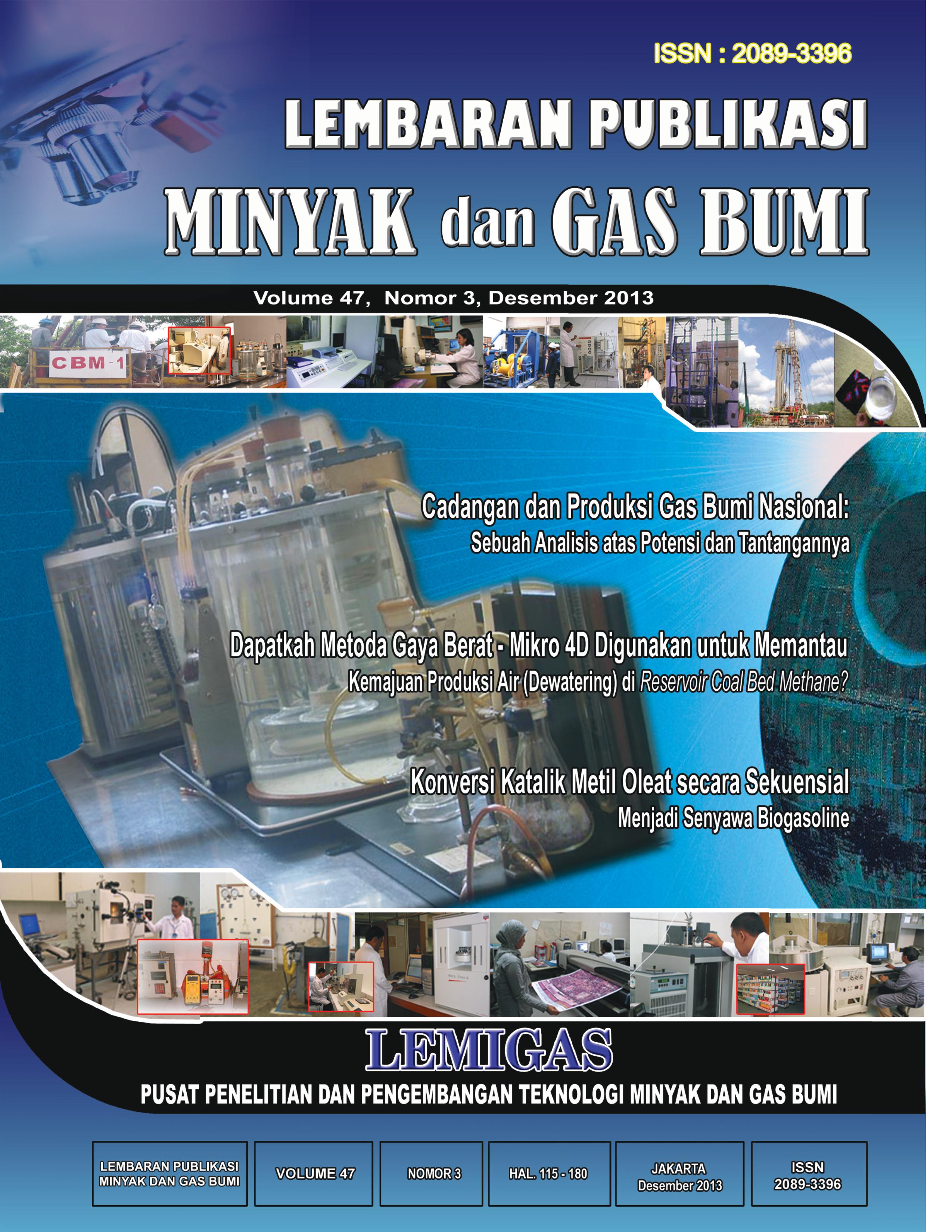Pengaruh Laju Alir dan Waktu Terhadap Faktor Skin pada Reservoir Minyak Bertenaga Dorong Gas Terlarut
DOI:
https://doi.org/10.29017/LPMGB.47.3.248Kata Kunci:
S(q, t), aliran dua fase, kurva inflow performance relationshipAbstrak
Kerusakan formasi atau faktor skin positif biasa ditemukan setelah kegiatan pemboran, komplesi maupun produksi. Terdapat beberapa jenis faktor skin positif, salah satunya adalah faktor skin akibat pengaruh laju alir dan waktu S(q,t). Faktor skin tersebut kurang mendapat perhatian, tetapi akan terbentuk secara alamiah dan tidak dapat dihindari atau diatasi dengan stimulasi jenis apapun. Dengan pertimbangan tersebut, maka penelitian ini dilakukan untuk menganalisis adanya S(q,t) dan faktor-faktor yang memengaruhi terhadap kinerja produksi sumur. S(q,t) dapat terjadi pada reservoir minyak dengan tenaga dorong gas terlarut, dimana kondisi saturasi gas awal lebih kecil dari saturasi gas kritis untuk seluruh reservoir (aliran minyak dan gas). Meskipun pengaruhnya terbatas untuk jangka waktu tertentu, namun bila tidak diatasi dapat merugikan. Berdasarkan hasil pengamatan dengan menggunakan simulator reservoir dan metoda perkiraan kurva Inflow Performance Relationship (IPR), dapat disimpulkan bahwa perkiraan kurva IPR tanpa memperhitungkan pengaruh S(q,t) memberikan hasil yang terlalu optimistik. Sehingga hal tersebut akan berpengaruh terhadap perencanaan pengembangan produksi dari reservoir minyak bertenaga dorong gas terlarut.
Referensi
Ahmed, Tarek. and McKinney, P.D. :“Advanced Reservoir Engineering”, Elsevier Inc, Oxford, 2005.
Brown, K.E., “The Technology of Artificial Lift Method”, Vol IV, Petroleum Publishing Company, Tulsa, Oklahoma, 1980.
Elias, Mohamed., El-Banbi, H.E., Fattah, K.A., Ahmed, E.S., and Tayeb, E.M.: “New Inflow Performance Relationship for Solution Gas Drive Oil Reservoir”, SPE Annual Technical Conference and Exhibition, New Orleans, Lousiana, 4-7 October 2009.
Fetkovich, M.J: “The Isochronal Testing of Oil Wells, “ SPE Reprint Series No.14. Pressure Transient Testing Method, 1980 Edition.
Gallice, Frederic. and Wiggins, M.L.:”A Comparison of Two Phase Infl ow Performance Relationships”, Journal SPE Production and Facilities, Volume 19, Number 2, May 2004.
Guo, B. and Lyons, W.C. :”Petroleum Production Engineering, Elsevier Science and Technology Books, 2007.
Haiquan, Zhong., Yingchuan, L., Yulian, Wen., Chengjian, Li., and Wei, Li.: “A New General
Formula for Dimensionless Well Inflow Performance Relationship”, Asia Pasific Oil and Gas Conference and Exhibition, Jakarta-Indonesia, 30 October-1 November 2007.
Jahanbani, A. and Shadizadeh, S.R.: “Determination of Inflow Performance Relationship by Well Testing”, Canadian International Petroleum Conference, Calgary, June 16-18 2009.
Klins, M.A., Majcher, M. W., “Inflow Performance Relationships for Damage or Improve Well Producing Under Solution Gas Drive”, JPT December 1992.
Levin,J.S.,M.Prats.,“TheCalculatedPerformance of Solution Gas Drive Reservoir”, JPT September 1961.
Qasem,Fuad.,Malallah,Adel.,Nashawi,I.S.,Mir, M.I.: Modeling Inflow Performance Relationship for Well Producing Multi Layer Solution Gas Drive Reservoirs”, North Africa Technical Conference and Exhibition, Cairo, Egypt, 20-22 February 2012.
Vogel, J. V., “Infl ow Performance Relationship for Gas Drive Well”, JPT, January 1968.











